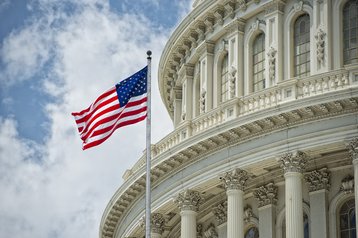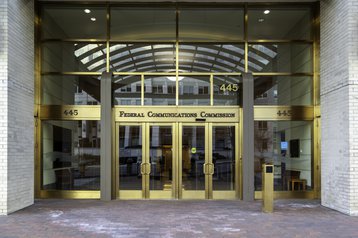The Biden Administration has released a National Spectrum Strategy for the US, which aims to open up additional wireless spectrum for advanced technologies - despite the fact that spectrum auctions in the US have been in limbo since March, when the authority of the Federal Communications Commission (FCC) was allowed to lapse.
More than 2,700 MHz of spectrum is being studied by the US government, which could be reallocated for purposes including wireless broadband networks, satellites, and drones. The proposal also suggests improved spectrum management.
The amount of spectrum proposed is nearly twice the 1,500MHz targeted by the Commerce Department's National Telecommunications and Information Administration (NTIA) in March.
"These spectrum bands are a mix of Federal and shared Federal/non-Federal bands—with an emphasis on mid-band frequencies," the new National Spectrum Strategy said. The bands "will be studied for a variety of uses, including terrestrial wireless broadband, innovative space services, unmanned aviation, and other autonomous vehicle operations.
"We must also prepare the spectrum workforce of the next generation for a globally competitive environment where innovation is a key to successful national economic growth and spectrum access in support of critical Federal missions. We are committed to a diverse, broad-based workforce that enables the United States to maintain its global leadership," said the White House.
Within the plan, five spectrum bands are mentioned, with the biggest chunk in the 7.125–8.4 GHz band, which could be used for wireless broadband. This band accounts for 1,275 MHz of the 2,790 MHz of spectrum being studied.,
The other spectrum bands on offer include 350 MHz from the 3.1–3.45 GHz band, which the Department of Defense has already studied for possible sharing with the private sector.
The National Spectrum Strategy also includes 500 MHz in the 18.1–18.6 GHz range and 600 MHz in the 37.0–37.6 GHz range, plus 61 MHz in the 5.03–5.091 GHz, which is being studied by the FCC, in coordination with NTIA and the Federal Aviation Administration. The report notes that it is expected to take near-term action to facilitate limited deployment of UAS in this band.
Earlier this year the US Congress allowed the spectrum auction authority of the Federal Communications Commission (FCC) to lapse for the first time ever.
A bill that would have extended the regulator’s spectrum authority to May 19 was passed by the lower house, but objections in the Senate (upper house) delayed the legislation, leading to the lapse.
The authority has not been reinstated yet
FCC not impressed
However, not everyone has kind words to say about the National Spectrum Strategy.
FCC Commissioner Brendan Carr slammed the report, accusing the government of "standing still."
"So how much spectrum does the Biden Administration’s spectrum plan commit to providing? Zero. After nearly three years of study, the Biden Administration does not commit to freeing up even a single MHz of spectrum," said Carr in a statement on Monday (November 13).
"Instead, they are announcing that they will continue studying the issue for years to come. While America is standing still, our global competitors and adversaries are passing us by. They are executing on actual spectrum plans that are putting actual spectrum to use in their countries."
He added that the Biden Administration has done a "complete 180 from the progress made under the prior Administration," noting that "from 2017 through 2020, the FCC freed up roughly 6,000 MHz of spectrum for licensed use alone plus thousands of additional MHz of spectrum for unlicensed use. The Biden Administration only plans to study less than 2,800 MHz."
FCC Chairwoman Jessica Rosenworcel also called for the restoration of the FCC's spectrum auction authority, as "restoring this authority will provide the United States with the strongest foundation to compete in a global wireless economy, counter our adversaries’ technology ambitions, and safeguard our national security.








